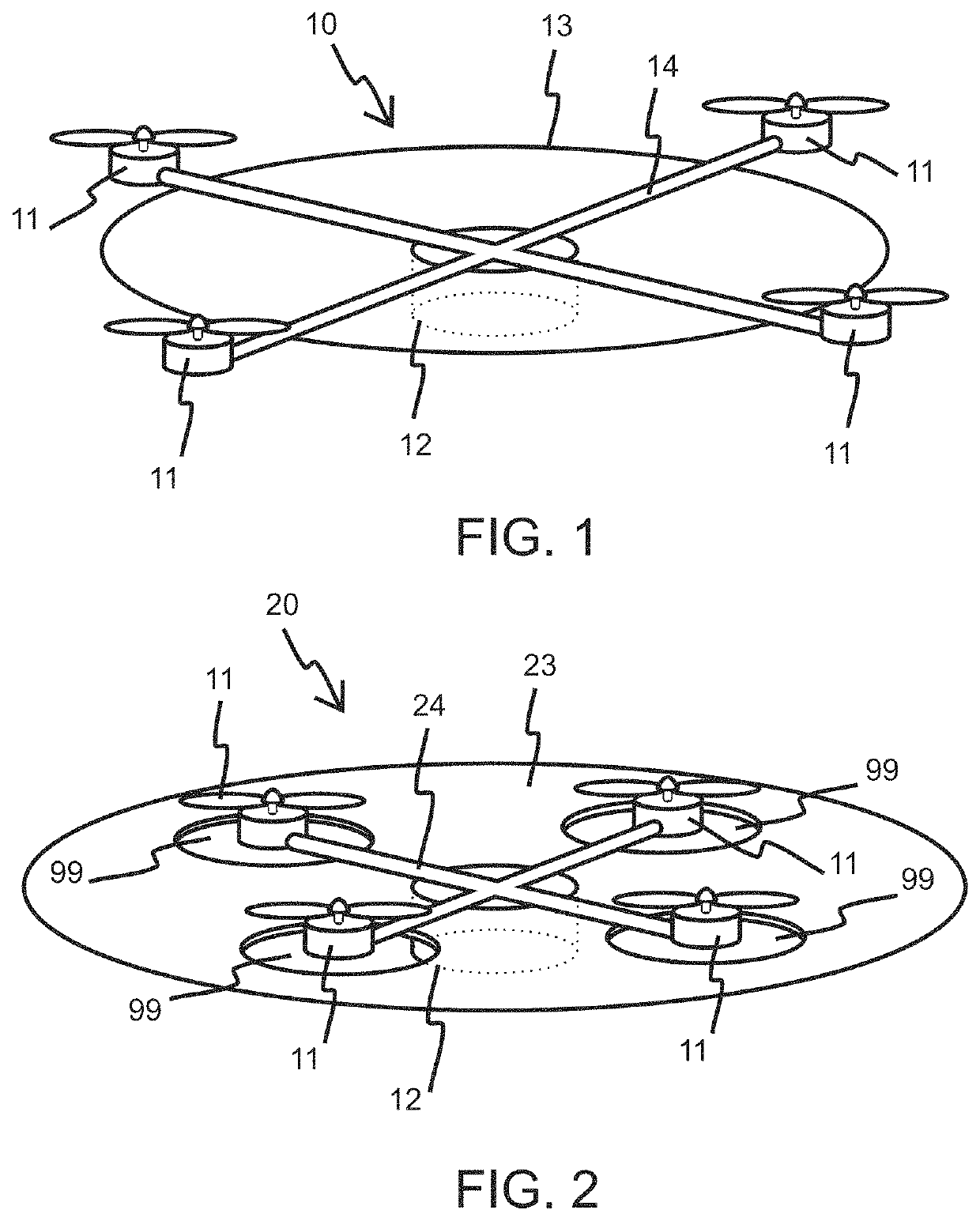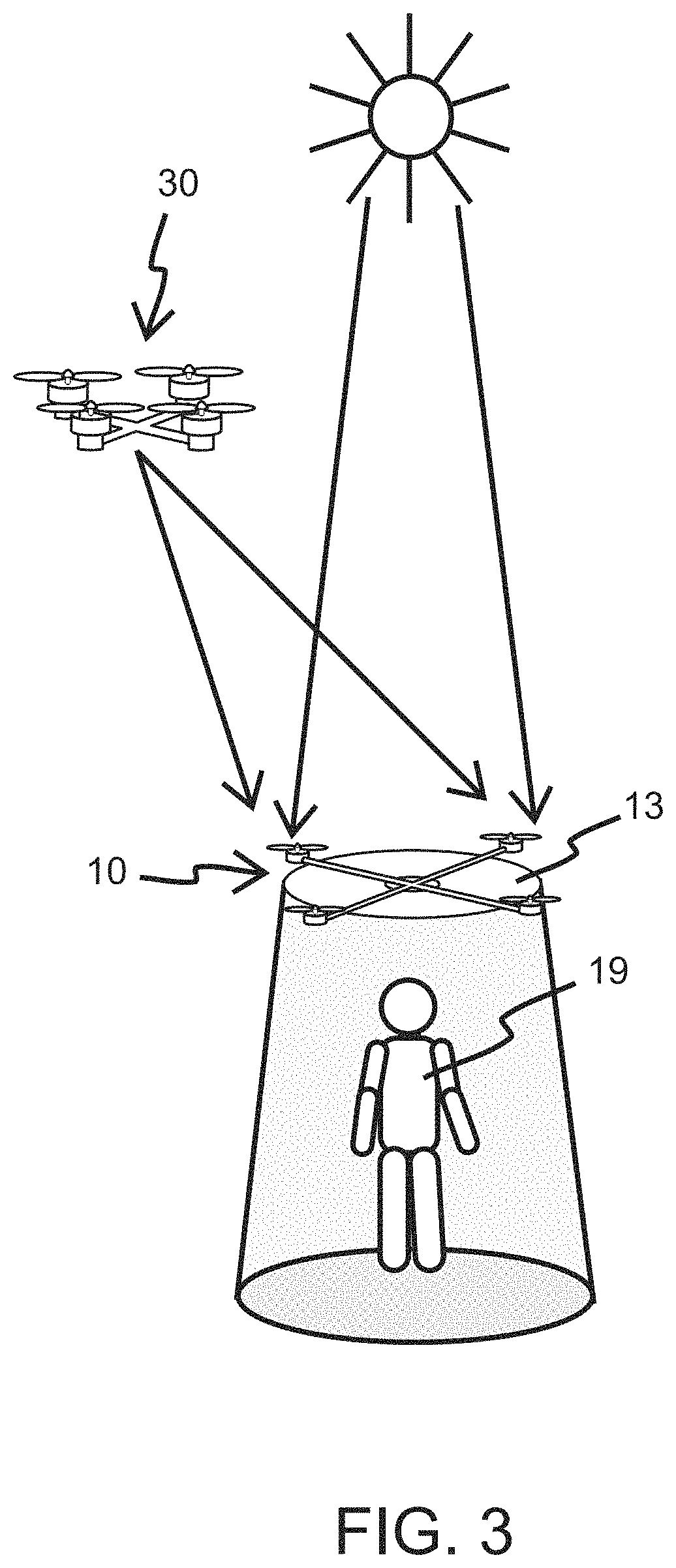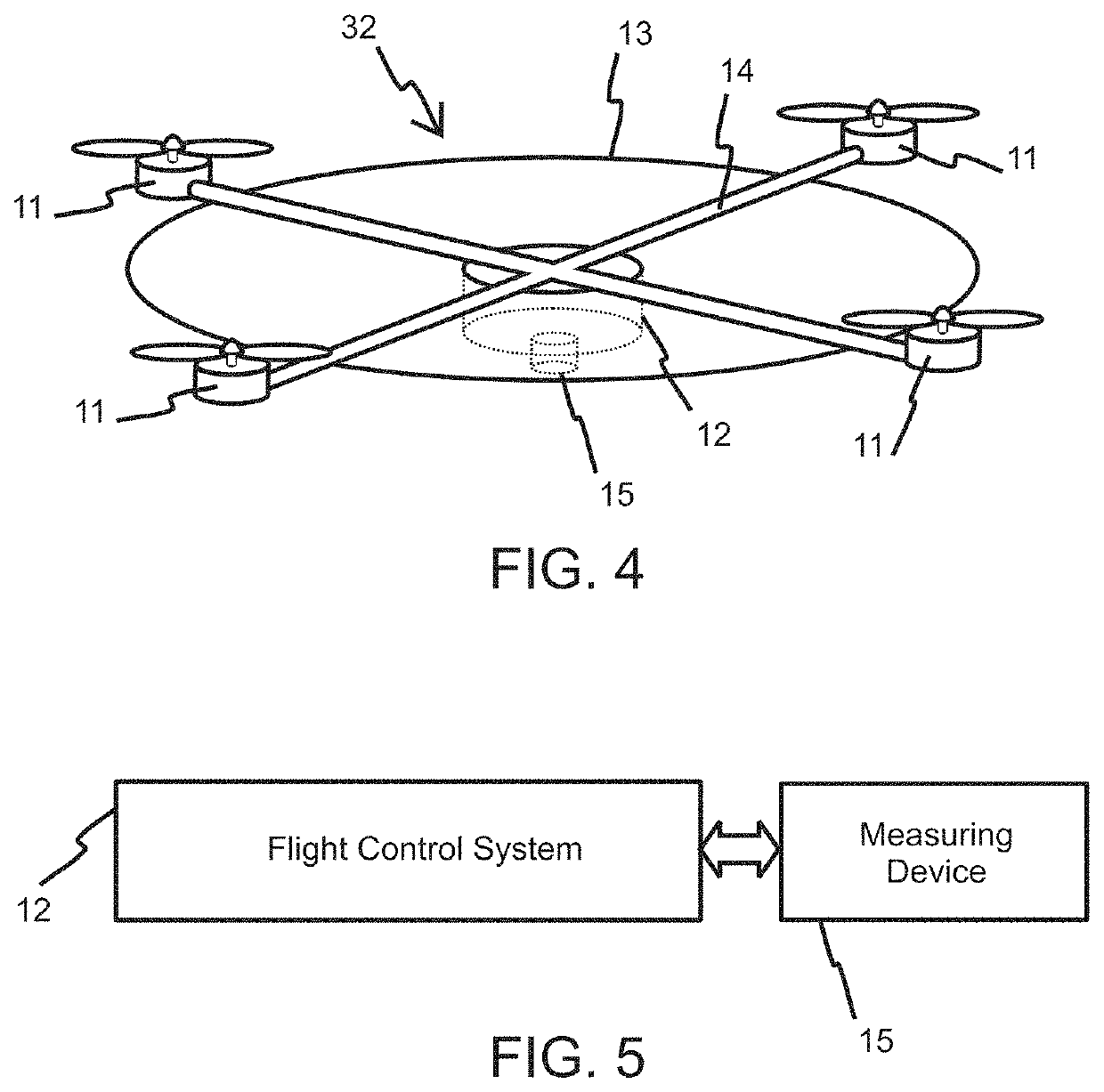Shadow casting drone
a technology of shadow casting and drones, applied in the field of drones, can solve the problems of cumbersome carrying a sun umbrella, increased harmful ultraviolet rays of the sun, and no solution has been offered to significantly alleviate the problem
- Summary
- Abstract
- Description
- Claims
- Application Information
AI Technical Summary
Benefits of technology
Problems solved by technology
Method used
Image
Examples
first embodiment
[0037]Referring to FIGS. 1 and 2, versions 1 and 2 of a first embodiment of the shadow casting drone are shown respectively. FIG. 1 illustrates a quadcopter 10 having four motors 11. The motors 11 are affixed to a frame 14. The drone 10 has a flight control system, FCS, 12 and a covering member 13. The four motors 11 are extended outside the covering member 13. Therefore, the covering member 13 does not directly block airflow generated by the motors 11 of the drone 10, preventing loss of motor energy.
[0038]The FCS 12 is configured to fly the drone to a height above a user's head. Referring to FIG. 3, the covering member 13 of the drone 10 blocks the sun's harmful rays from reaching a user 19, and it shields the user 19 against an onlooking drone 30.
[0039]In this disclosure, the term ‘user’ refers to both a person and thing that benefit from the invention. Therefore it may refer to a person, a selected object and a selected spot.
[0040]In more detail, the FCS 12 of the shadow casting ...
second embodiment
[0043]Referring to FIG. 4, a second embodiment of the shadow casting drone is shown. The second embodiment gives a shadow casting drone that protects a stationary user from an unwanted onlooking drone. FIG. 4 shows a quadcopter 32 having four motors 11. The motors 11 are affixed to a frame 14. The drone 32 has a flight control system, FCS, 12 and a covering member 13. The four motors 11 are placed outside the covering member 13.
[0044]The FCS 12 of the shadow casting drones 32 of the second embodiment first flies the drone 32 to a selected height, and then it keeps the drone 32 hovering in a stationary manner. In this position, the covering member 13 of the drone 32 acts as an overhead covering, protecting anyone standing or sitting under its shadow from the cameras of other drones.
[0045]Referring to FIG. 4, the second embodiment further comprises a measuring device 15. The measuring device 15 is configured to provide the FCS 12 information for flying the drone 32 on a stable holding...
third embodiment
[0056]Next a third embodiment of the shadow casting drone is explained. This embodiment generalizes the second embodiment in that the second embodiment illustrates the invention for a stationary user, and the third embodiment illustrates the invention for a non-stationary user. The third embodiment has many similarities to the second embodiment. The two embodiments mostly differ in the way they process their measuring devices. To describe the third embodiment, we will use FIGS. 4 and 5 of the second embodiment.
[0057]FIG. 4 shows a quadcopter 32 having four motors 11. The motors 11 are affixed to a frame 14. The drone 32 has a flight control system, FCS, 12 and a covering member 13. The four motors 11 are placed outside the covering member 13.
[0058]Referring to FIG. 4, the third embodiment further comprises a measuring device 15. The measuring device 15 is configured to provide the FCS 12 information for tracking a non-stationary user with the drone 32 and for covering the non-statio...
PUM
 Login to View More
Login to View More Abstract
Description
Claims
Application Information
 Login to View More
Login to View More - R&D
- Intellectual Property
- Life Sciences
- Materials
- Tech Scout
- Unparalleled Data Quality
- Higher Quality Content
- 60% Fewer Hallucinations
Browse by: Latest US Patents, China's latest patents, Technical Efficacy Thesaurus, Application Domain, Technology Topic, Popular Technical Reports.
© 2025 PatSnap. All rights reserved.Legal|Privacy policy|Modern Slavery Act Transparency Statement|Sitemap|About US| Contact US: help@patsnap.com



